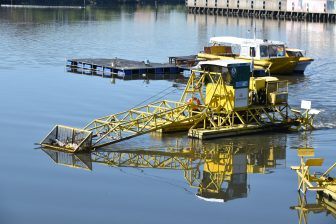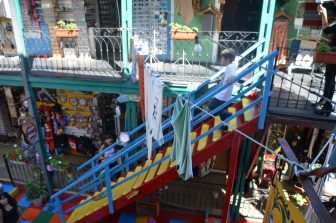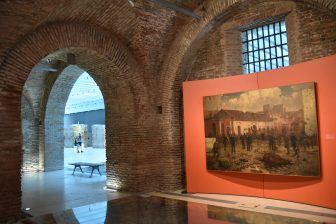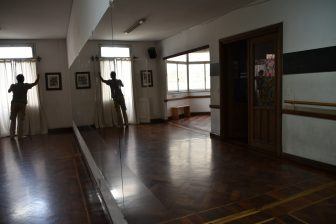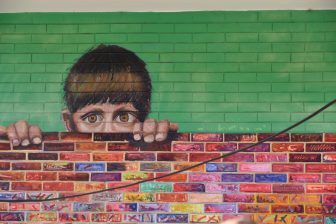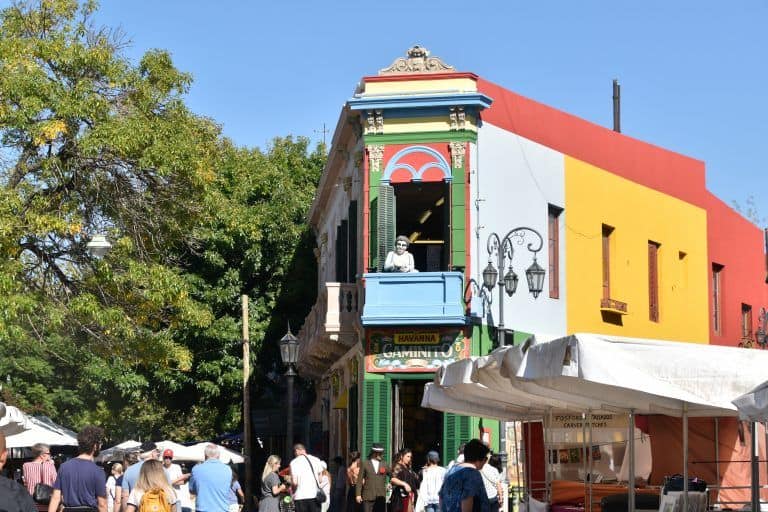
In Buenos Aires in Argentina, there is an area called La Boca with many colourful houses.
We had been there before, but this time we visited and joined a walking tour.
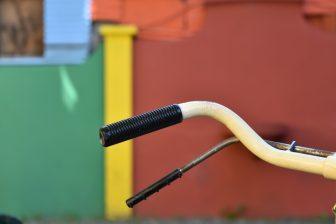
It was a nice hot day with bright sunshine, so the colours of the houses were clearer against the blue sky than before.
We took many photos.
The tour started with an explanation of the history of this area.
We already knew that La Boca means “a mouth” and the name came from the port situated at the mouth of a river, which was the focal point of the town’s development.
This time, I learned more about the history that this area was known as immigrants’ place.
I cannot remember the name of our guide, but according to him, they ‘liberated’ the African slaves so that they could send them in the army to fight against Paraguay towards the end of the 19th century.
Many of those former slaves died in the war and also of a Yellow Fever epidemic soon after the war, so there were no more in Buenos Aires.
The indigenous people had already been driven out of the city by then, so around that time, there were only white people living there.
However, they needed to increase their population, so the whole nation took a step to encourage all Europeans to emigrate to Argentina.
The 
Apparently even Armenians were called ‘Turkish’, which is outrageous, considering what happened in Turkey in the early 20th century.
Many Italian people came from the port town, Genoa, to La Boca.
When the Yellow Fever spread, the wealthy people left this area, leaving their property to the church.
The church rented these houses to the immigrants during those unfavourable conditions.
The immigrants were not happy about that, so they started building shanties wherever there was land and started living there.
There is a small area of houses surrounding a narrow alley where we had visited last time, too.
Within this area, apparently as many as 200 people lived at one point.
Because of those circumstances, people in La Boca had strong feelings towards the community.
For example, in those days all the people living there ate Gnocchi together on the day before pay day.
Our guide said that even now, their spirit of community is very strong.
This area is very touristy now and most of the old houses were bought by foreigners and became souvenir shops or restaurants. However, once you go out of this particular area, the poor people still live in houses in poor condition not much different from the old time.
The area where the tourists can walk safely is limited; mainly only around Caminito street.
The shops and restaurants close at 5 pm, so there are no places for dinner, apparently.
[ Mar.2018 ]

